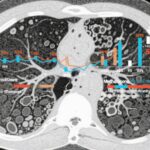Highlights
- Post-transplant cyclophosphamide combined with cyclosporin significantly extends GVHD-free, relapse-free survival compared to standard methotrexate-based prophylaxis in matched related donor allogeneic SCT.
- The new regimen reduces the incidence of severe (grade III-IV) acute GVHD and shows a trend toward improved overall survival.
- Adverse event rates are comparable between the two prophylactic strategies in the early post-transplant period.
- This approach offers a promising alternative in both myeloablative and reduced-intensity conditioning settings for high-risk hematologic malignancies.
Clinical Background and Disease Burden
Allogeneic peripheral-blood stem-cell transplantation (SCT) remains the cornerstone curative therapy for patients with high-risk hematologic malignancies such as acute leukemias and myelodysplastic syndromes. Despite advances in supportive care and transplantation techniques, graft-versus-host disease (GVHD) continues to be a major source of morbidity and non-relapse mortality. GVHD arises when donor immune cells attack host tissues, most commonly the skin, liver, and gastrointestinal tract. The standard prophylactic regimen involves a calcineurin inhibitor (CNI), typically cyclosporin or tacrolimus, combined with an antimetabolite such as methotrexate. However, these regimens do not fully eliminate the risk of severe acute or chronic GVHD, and carry their own toxicity profiles, including mucositis, organ dysfunction, and infection risk. There is an unmet need for more effective and tolerable prophylactic strategies, particularly for patients receiving grafts from HLA-matched related donors following myeloablative conditioning.
Research Methodology
The Australasian Leukaemia and Lymphoma Group conducted a randomized, controlled, open-label trial (ALLG BM12 CAST; ACTRN12618000505202) to evaluate the efficacy of post-transplant cyclophosphamide (PTCy) plus cyclosporin (CSP) compared to the standard CSP-methotrexate (MTX) regimen for GVHD prophylaxis.
– Population: 134 adult patients undergoing SCT from HLA-matched related donors after myeloablative or reduced-intensity conditioning for high-risk hematologic malignancies.
– Interventions:
– Experimental group: PTCy (post-transplant cyclophosphamide) plus cyclosporin.
– Control group: Cyclosporin plus methotrexate.
– Primary endpoint: GVHD-free, relapse-free survival (GRFS), defined as survival without grade III-IV acute GVHD, chronic GVHD requiring systemic therapy, relapse, or death.
– Secondary endpoints: Incidence of acute and chronic GVHD, overall survival, relapse rates, and adverse events.
Key Findings
The study demonstrated a clear benefit of the cyclophosphamide-cyclosporin regimen over the standard approach:
– GVHD-free, relapse-free survival: Median GRFS was 26.2 months (95% CI, 9.1 to not reached) in the experimental group versus 6.4 months (95% CI, 5.6 to 8.3) in the standard group (P<0.001).
– Three-year GRFS rates: 49% (95% CI, 36 to 61) with PTCy+CSP vs. 14% (95% CI, 6 to 25) with CSP+MTX. The hazard ratio (HR) for GVHD, relapse, or death was 0.42 (95% CI, 0.27 to 0.66), favoring the experimental arm.
– Acute GVHD: Grade III-IV acute GVHD at 3 months was seen in 3% (95% CI, 1 to 10) in the PTCy+CSP group versus 10% (95% CI, 4 to 19) in the standard group.
– Overall survival: At 2 years, OS was 83% for the PTCy+CSP group versus 71% for CSP+MTX (HR for death, 0.59; 95% CI, 0.29 to 1.19), although this did not reach statistical significance.
– Adverse events: The incidence of serious adverse events within 100 days post-transplant was similar in both groups, supporting the safety of the PTCy-based regimen.
| Outcome | PTCy + CSP | CSP + MTX | P-value / HR |
|---|---|---|---|
| Median GRFS | 26.2 months | 6.4 months | P<0.001 |
| 3-year GRFS | 49% | 14% | HR 0.42 |
| Grade III-IV aGVHD (3mo) | 3% | 10% | — |
| 2-year OS | 83% | 71% | HR 0.59 |
Mechanistic Insights and Biological Plausibility
Cyclophosphamide, traditionally used as part of conditioning or for immune modulation, is increasingly recognized for its ability to selectively deplete alloreactive T cells post-transplant, thereby reducing GVHD risk without eliminating the beneficial graft-versus-tumor effect. When administered shortly after transplantation, cyclophosphamide induces apoptosis in rapidly proliferating T cells that are activated by alloantigens, sparing regulatory T cells and hematopoietic stem cells. In combination with cyclosporin, which inhibits T-cell activation via calcineurin pathway blockade, this strategy offers a synergistic approach to immune modulation.
Expert Commentary
This trial provides compelling evidence supporting post-transplant cyclophosphamide as part of the prophylactic regimen for matched related donor SCT. It aligns with growing consensus in the field that PTCy is not limited to haploidentical transplantation but has broader applicability. As Dr. Hill and colleagues note, these results may prompt re-examination of standard prophylactic protocols and support inclusion of PTCy in clinical guidelines for both myeloablative and reduced-intensity transplants.
Guideline committees, such as those from the European Society for Blood and Marrow Transplantation (EBMT) and American Society for Transplantation and Cellular Therapy (ASTCT), have begun to recognize the value of PTCy in various donor and conditioning settings, though additional confirmatory studies may influence the pace of adoption.
Controversies and Limitations
While the results are robust, several limitations should be noted:
– The study was conducted in a relatively homogeneous, well-resourced setting; generalizability to broader, more diverse populations is not guaranteed.
– The trial was not powered to detect differences in overall survival, and longer-term follow-up is required to assess late effects and chronic GVHD.
– As with all immunomodulatory regimens, vigilance for infectious complications and secondary malignancies is warranted.
Conclusion
Post-transplant cyclophosphamide combined with cyclosporin offers a significant advance in GVHD prophylaxis for matched related donor SCT, resulting in meaningful improvements in GVHD-free, relapse-free survival and reduction in severe acute GVHD. This regimen is safe, effective, and applicable across conditioning intensities. These findings support consideration of PTCy-based approaches as new standard-of-care options in allogeneic transplantation for hematologic malignancies. Ongoing research should clarify long-term outcomes and optimal patient selection.
References
1. Curtis DJ, Patil SS, Reynolds J, et al; Australasian Leukaemia and Lymphoma Group. Graft-versus-Host Disease Prophylaxis with Cyclophosphamide and Cyclosporin. N Engl J Med. 2025 Jul 17;393(3):243-254. doi: 10.1056/NEJMoa2503189. Epub 2025 Jun 13. PMID: 40513032.
2. Luznik L, O’Donnell PV, Fuchs EJ. Post-transplantation cyclophosphamide for tolerance induction in HLA-haploidentical bone marrow transplantation. Semin Oncol. 2012;39(6):683-693.
3. EBMT Handbook: Hematopoietic Stem Cell Transplantation and Cellular Therapies. European Society for Blood and Marrow Transplantation, 2023.



